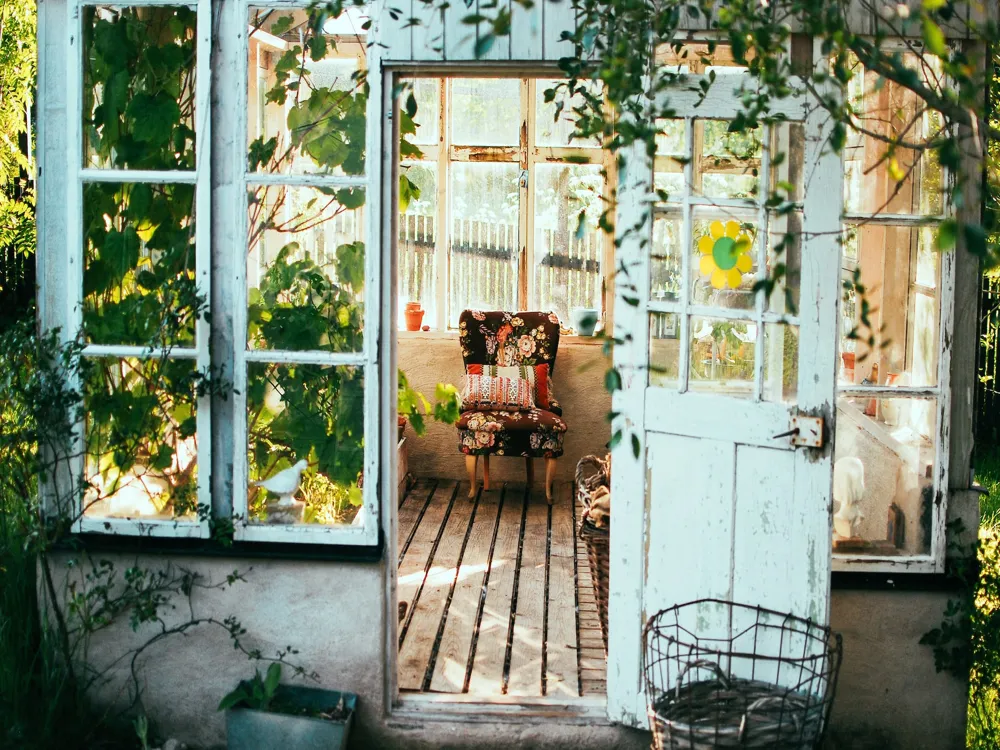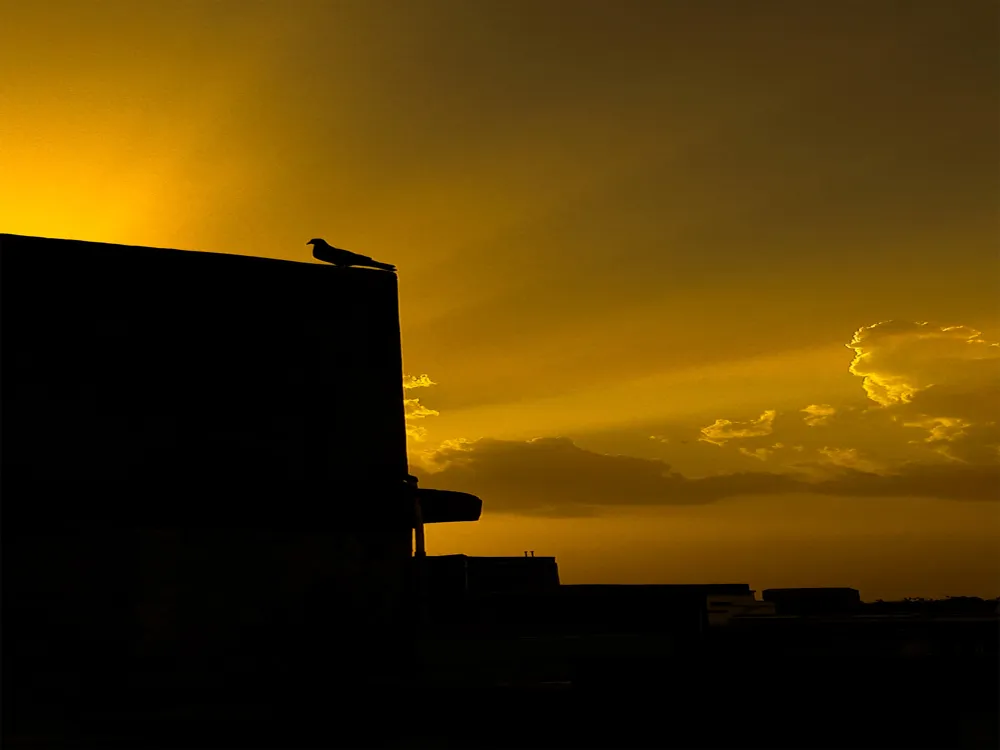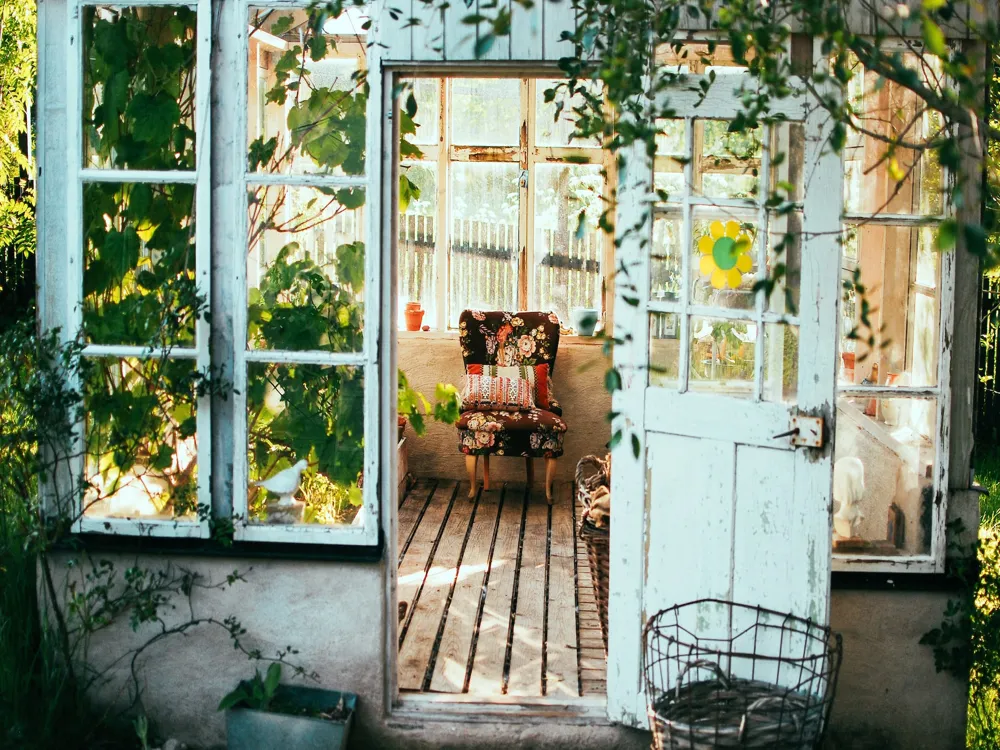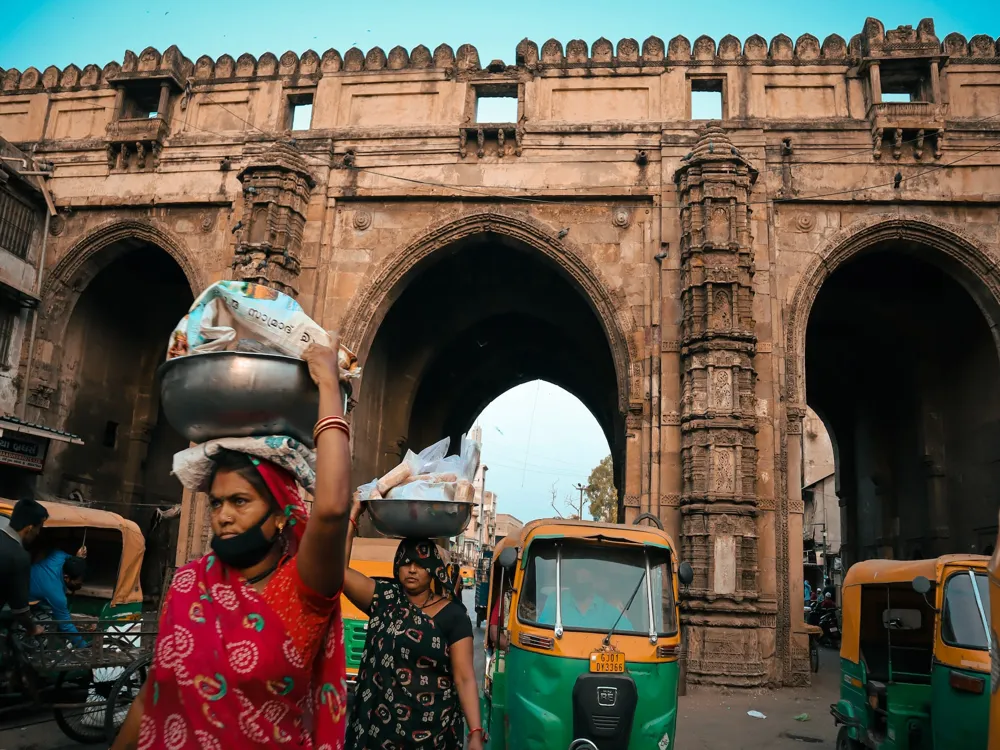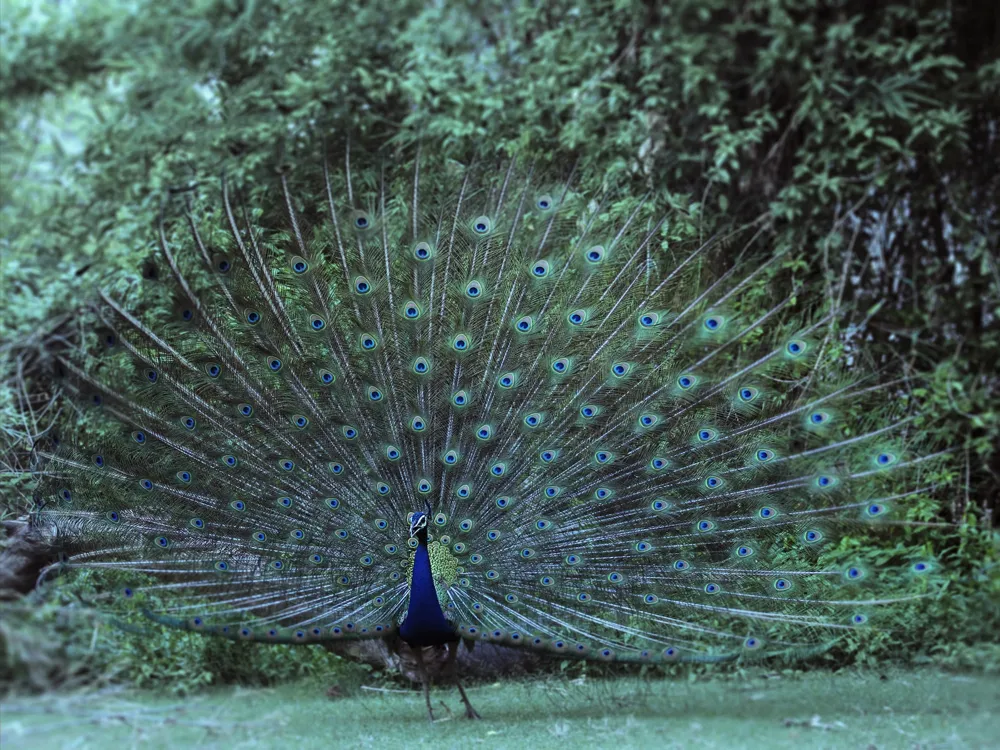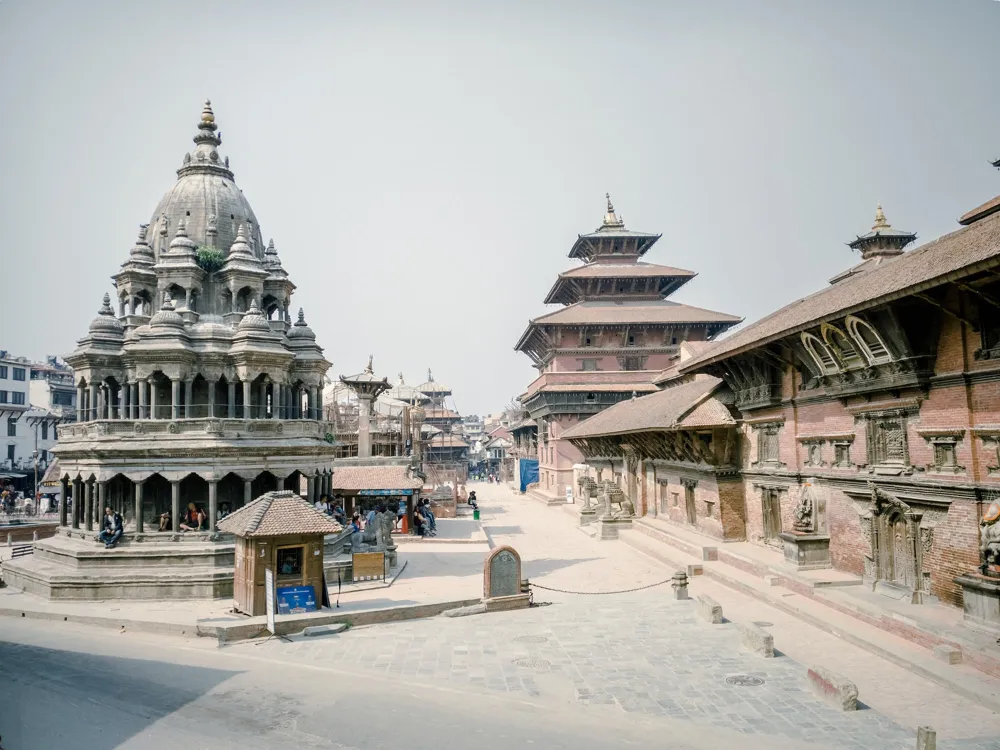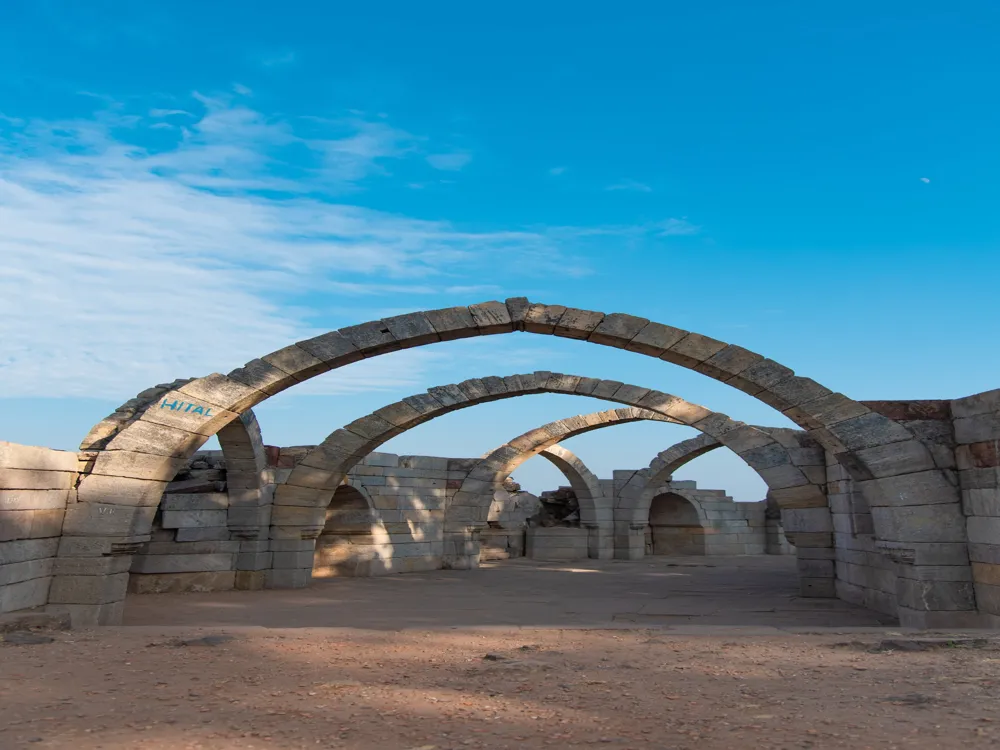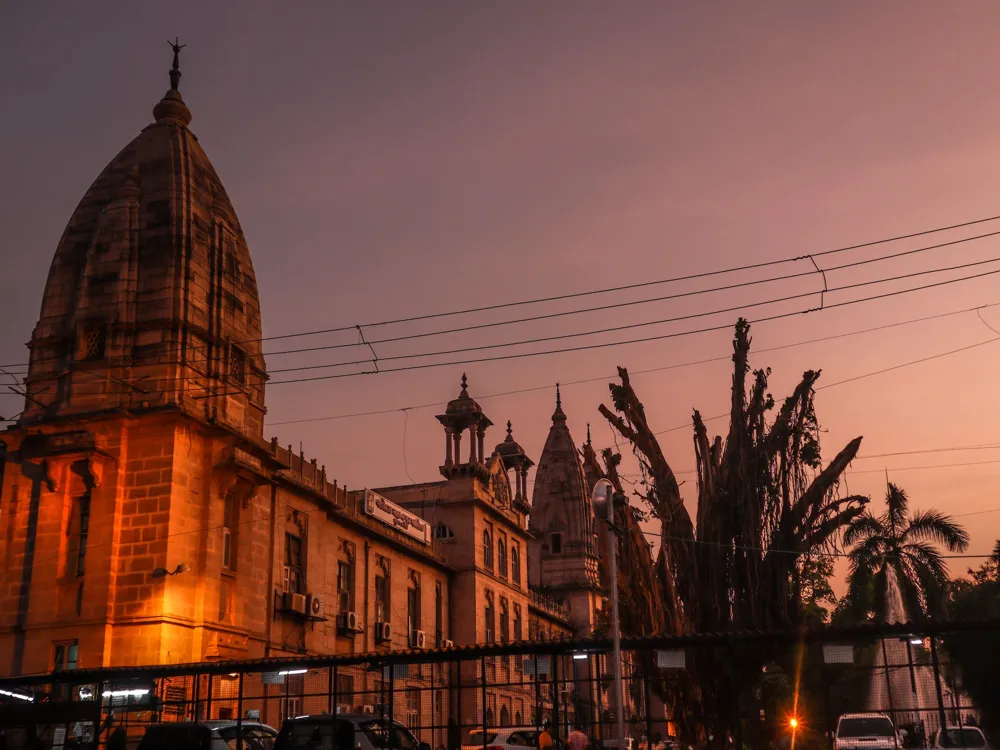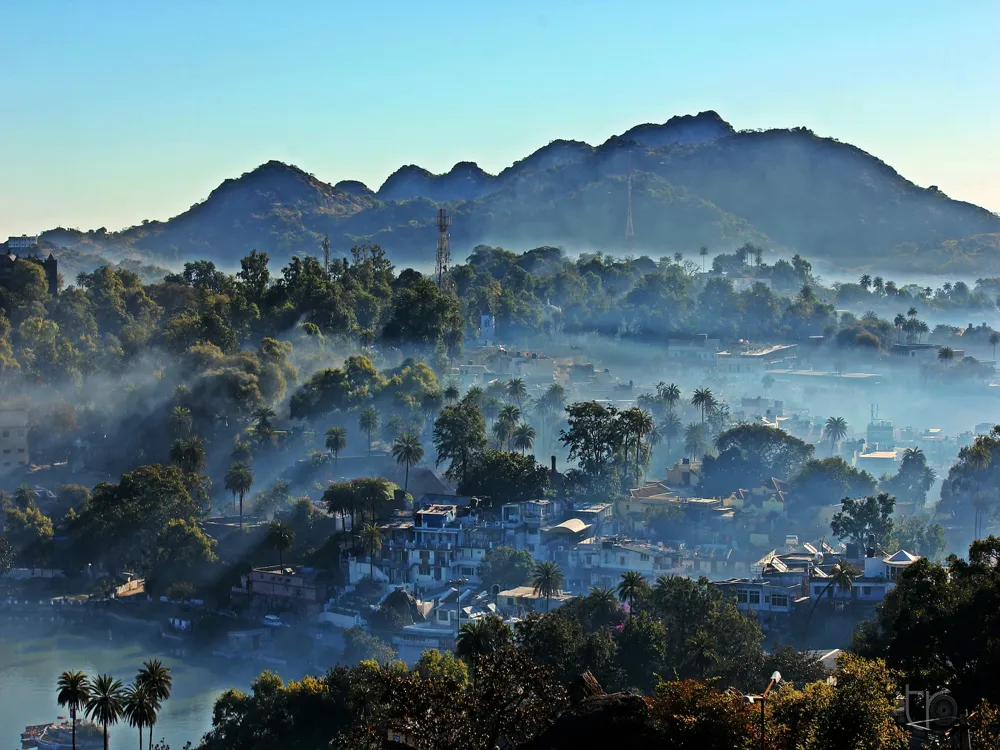The Sidi Saiyyed Mosque, a renowned architectural marvel, stands in the heart of Ahmedabad, Gujarat, India. Built in 1573, the last year of the Gujarat Sultanate, this mosque is most famous for its intricate lattice windows, known as 'Jali,' depicting the 'Tree of Life.' The mosque was constructed by Sidi Saiyyed, an Abyssinian in the retinue of Bilal Jhajar Khan, general in the army of the last Sultan Shams-ud-Din Muzaffar Shah III of the Gujarat Sultanate. The mosque is a superb example of Indo-Islamic architecture, which combines elements from Persian architecture and Indian traditions. The primary material used in its construction is yellow sandstone, and it was built using primarily traditional methods. Its design reflects a harmonious blend of aesthetics and spirituality. The mosque has ten semi-circular windows, the appeal of which lies in the splendid intricacy of the carved stone work. These Jalis are a stunning example of craftsmanship and are considered the unofficial symbol of Ahmedabad City. The architectural layout of the Sidi Saiyyed Mosque is a blend of Islamic and Hindu styles. The mosque's back wall is filled with square stone pierced panels in geometrical designs. The central window arch of the mosque is semi-circular with five lobed designs, separated by intricately carved pillars. The mosque was originally intended to serve as a private mosque for Sidi Saiyyed. Over the years, it has become a significant cultural and historical landmark, drawing numerous visitors and architecture enthusiasts worldwide. Its significance extends beyond just architecture; the mosque has been a symbol of religious harmony and cultural confluence. It has stood the test of time and remains a serene oasis in the bustling city of Ahmedabad. Its legacy is such that the iconic design of its windows inspired the logo of the prestigious Indian Institute of Management Ahmedabad. The Sidi Saiyyed Mosque is an epitome of the intricate and refined architectural style that developed in Gujarat during the Sultanate period. The mosque is devoid of a minaret, which is a common feature in most mosques. Instead, it features beautifully carved stone lattices, or Jalis, which are its most distinguishing feature. The intricacy of the lattice work is unparalleled, with designs depicting trees, foliage, and intertwining branches that create a mesmerizing effect. These Jalis not only demonstrate the high level of craftsmanship but also serve a practical purpose by allowing light and air into the mosque, creating a tranquil and contemplative environment inside. The mosque's layout is a rectangular prayer hall with five arched windows, each filled with the famed Jalis. The central window is particularly notable for its size and elaborate design. The mosque's interior is relatively simple, with a focus on the spiritual experience. There is an absence of lavish decorations or inscriptions, which is characteristic of mosques built in this period. The mosque's builders employed a technique known as 'trabeate,' which relies on the use of beams and brackets, a method commonly found in Hindu and Jain temples of the period. This blend of Islamic and local architectural traditions exemplifies the syncretic culture of the region. Visitors should dress modestly and remove footwear before entering the mosque. It's important to maintain a quiet demeanor and avoid loud conversations as a sign of respect. Photography is allowed, but it's advisable to avoid using flash inside the mosque to preserve the tranquility of the space and the integrity of the intricate Jalis. The mosque is best visited early in the morning or late afternoon to avoid the midday heat and to witness the play of light through the Jalis, creating a mesmerizing effect. Consider taking a guided tour to gain deeper insights into the mosque's history, architecture, and cultural significance. While exploring, be mindful of the cultural and religious importance of the mosque. Avoid touching or damaging any part of the historical structure. The Sidi Saiyyed Mosque is easily accessible from various parts of Ahmedabad. It's located in the city center, near Lal Darwaja, a major city bus station. Visitors can take a taxi, auto-rickshaw, or local bus to reach the mosque. For those preferring a more traditional mode of transport, cycle rickshaws are also available. The mosque's central location makes it a convenient stop for those exploring other historical sites in Ahmedabad. Read More:Overview of Sidi Saiyyed Mosque, Ahmedabad, Gujarat
Architecture of Sidi Saiyyed Mosque
Tips When Visiting Sidi Saiyyed Mosque
Respect the Sanctity of the Mosque
Photography Guidelines
Best Time to Visit
Guided Tours
Cultural Sensitivity
How To Reach Sidi Saiyyed Mosque
Sidi Saiyyed Mosque
Ahmedabad
Gujarat
NaN onwards
View ahmedabad Packages
Weather :
Label : Must Visit
Tags : Mosque
Timings : 7:00 AM - 6:00 PM
Time Required : 1-2 hrs
Entry Fee : No entry fee
Planning a Trip? Ask Your Question
Ahmedabad Travel Packages
View All Packages For Ahmedabad
Top Hotel Collections for Ahmedabad

Private Pool

Luxury Hotels

5-Star Hotels

Pet Friendly
Top Hotels Near Ahmedabad
Other Top Ranking Places In Ahmedabad
View All Places To Visit In ahmedabad
Faq on Ahmedabad
What is the Sidi Saiyyed Mosque famous for?
The Sidi Saiyyed Mosque is renowned for its intricate stone lattice work, particularly the
Where is the Sidi Saiyyed Mosque located in Ahmedabad?
The Sidi Saiyyed Mosque is situated in the heart of Ahmedabad, near the Lal Darwaja area.
Is the Sidi Saiyyed Mosque open to visitors?
Yes, the mosque is open to visitors. However, it's important to respect its religious significance and cultural heritage when visiting.
What is the architectural style of the Sidi Saiyyed Mosque?
The mosque features Indo-Islamic architecture with intricate stone carving and jali work, showcasing a blend of Hindu and Islamic influences.
Are there any restrictions for visitors at the Sidi Saiyyed Mosque?
Visitors are expected to dress modestly and remove their shoes before entering the mosque premises. Additionally, silence and respect for worshippers are encouraged.
View ahmedabad Packages
Weather :
Label : Must Visit
Tags : Mosque
Timings : 7:00 AM - 6:00 PM
Time Required : 1-2 hrs
Entry Fee : No entry fee
Planning a Trip? Ask Your Question
Ahmedabad Travel Packages
View All Packages For Ahmedabad
Top Hotel Collections for Ahmedabad

Private Pool

Luxury Hotels

5-Star Hotels

Pet Friendly
Top Hotels Near Ahmedabad
Other Top Ranking Places In Ahmedabad
View All Places To Visit In ahmedabadFaq on Ahmedabad
What is the Sidi Saiyyed Mosque famous for?
The Sidi Saiyyed Mosque is renowned for its intricate stone lattice work, particularly the
Where is the Sidi Saiyyed Mosque located in Ahmedabad?
The Sidi Saiyyed Mosque is situated in the heart of Ahmedabad, near the Lal Darwaja area.
Is the Sidi Saiyyed Mosque open to visitors?
Yes, the mosque is open to visitors. However, it's important to respect its religious significance and cultural heritage when visiting.
What is the architectural style of the Sidi Saiyyed Mosque?
The mosque features Indo-Islamic architecture with intricate stone carving and jali work, showcasing a blend of Hindu and Islamic influences.
Are there any restrictions for visitors at the Sidi Saiyyed Mosque?
Visitors are expected to dress modestly and remove their shoes before entering the mosque premises. Additionally, silence and respect for worshippers are encouraged.








